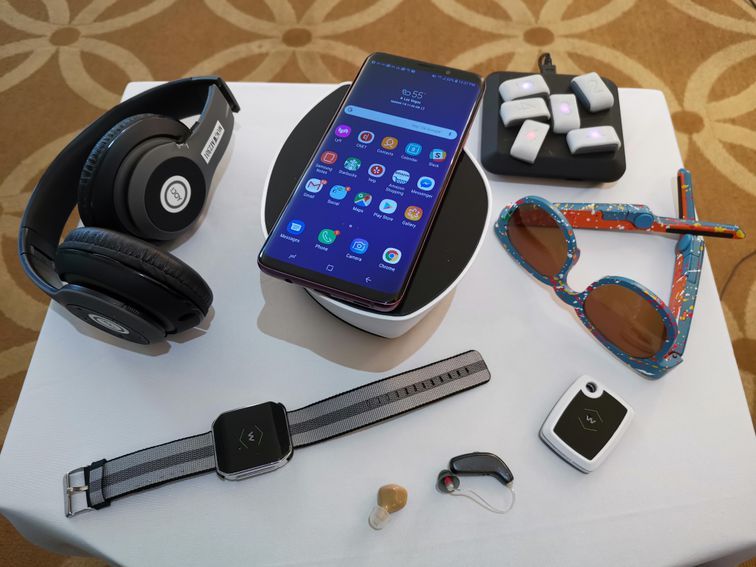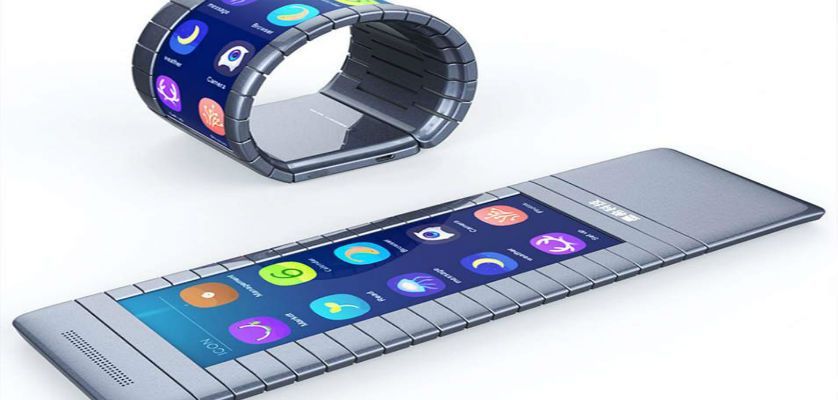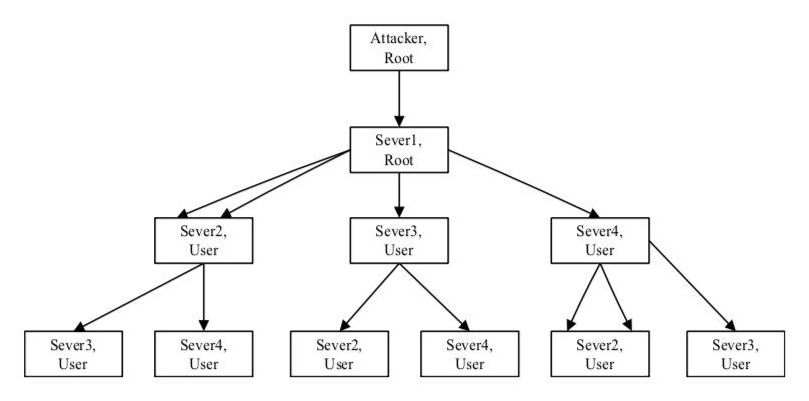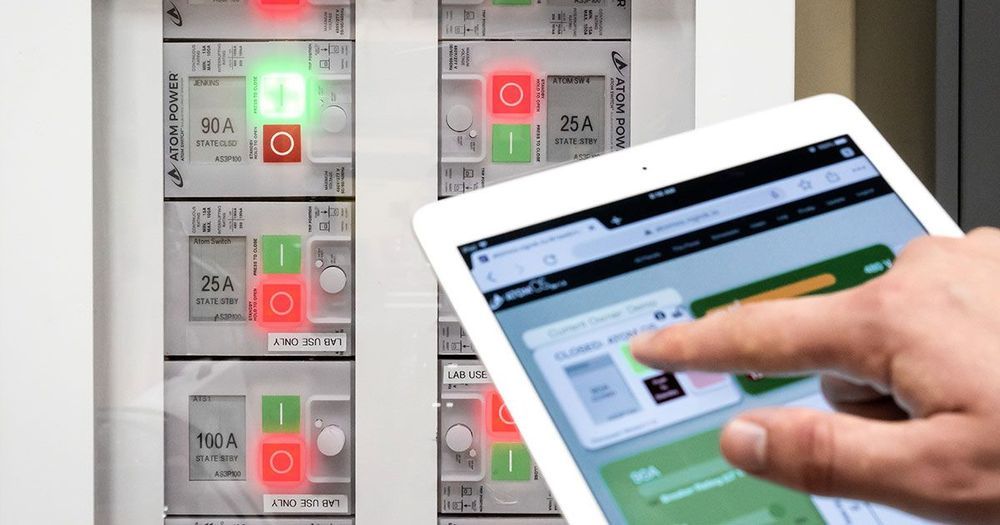Archive for the ‘mobile phones’ category: Page 161
Jun 15, 2019
Map your genome at home with a cell-phone sized human DNA sequencer
Posted by Richard Christophr Saragoza in categories: biotech/medical, mobile phones
And yet still; the system still requires everyone to carry an identification card.
The most extensive and detailed human genome sequence yet has been assembled using a hand-held device roughly the size of a cell phone.
An international team of scientists working at a lab at the University of California, Santa Cruz, created a portable nanopore sequencer that not only used DNA fragments hundreds of times longer than is standard, but closed 12 gaps in the known human genome, according to a UCSC press release. That makes the human genome it assembled the most complete one ever created to date. A paper describing the research was published in the scientific journal Nature Biotechnology.
Continue reading “Map your genome at home with a cell-phone sized human DNA sequencer” »
Jun 10, 2019
New Bendable Smartphone Technology could use Monitoring to Save Patients’ Lives
Posted by Quinn Sena in categories: biotech/medical, health, mobile phones
Is a new phone on your holiday shopping list? A “radical” technology being developed at Purdue University that’s making smartphones and other electronic devices more bendable could help save lives one day soon through better health monitoring.
Jun 7, 2019
The Next Big Phones Could Bring a Billion People Online
Posted by Derick Lee in categories: internet, mobile phones, neuroscience
Nowhere is that clearer than in Africa, which has the world’s lowest share of people using the internet, under 25%. The cohort of 800 million offline people spread across the continent’s 54 countries is younger and growing faster than most, but incomes are lower and a larger share of residents live in rural areas that are tough to wire for internet access—or, for that matter, electricity. Now, however, a handful of phone purveyors are trying in greater earnest to nudge internet-ready upgrades into African markets, with models designed with an eye toward rural priorities (first those of rural India, where they’re already hits), rather than battered thirdhand flip phones from the heyday of the Spice Girls.
About half of humanity don’t have internet access, and a lot of those people are in Africa. Enter a $20 device with smartphone brains and a five-day battery.
Jun 4, 2019
Apple Publishes Bitcoin Icons & ‘CryptoKit’; iPhone Crypto Wallet Coming?
Posted by Klaus Baldauf in categories: bitcoin, mobile phones
May 31, 2019
Google restricts Huawei’s use of Android
Posted by Fyodor Rouge in category: mobile phones
May 31, 2019
WhatsApp Has Exposed Phones To Israeli Spyware — Update Your Apps Now
Posted by Fyodor Rouge in categories: cybercrime/malcode, encryption, mobile phones
WhatsApp has admitted to a major cybersecurity breach that has enabled both iPhone and Android devices to be targeted with spyware from Israel’s NSO. This is a major breach for WhatsApp, with the product’s encrypted voice calls seen as a secure alternative to standard calls.
May 29, 2019
Defense against wireless attacks using a deep neural network and game theory
Posted by Saúl Morales Rodriguéz in categories: business, habitats, internet, mobile phones, robotics/AI, security
A growing number of devices are now connected to the internet and are capable of collecting, sending and receiving data. This interconnection between devices, referred to as the Internet of Things (IoT), poses serious security threats, as cyberattackers can now target computers and smartphones, but also a vast array of other devices, such as tablets, smart watches, smart home systems, transportation systems and so on.
For the time being, examples of large-scale IoT implementations (e.g. connected infrastructure, cities, etc.) are somewhat limited, yet they could soon become widespread, posing significant risks for businesses and public services that heavily rely on the internet in their daily operations. To mitigate these risks, researchers have been trying to develop security measures to protect devices connected to the internet from wireless network attacks.
To this end, two researchers at Baoji University of Arts and Sciences, in China, have recently developed a new method to defend devices in an IOT environment from wireless network attacks. Their approach, presented in a paper published in Springer’s International Journal of Wireless Information Networks, combines a deep neural network with a model based on game theory, a branch of mathematics that proposes strategies for dealing with situations that entail competition between different parties.
Continue reading “Defense against wireless attacks using a deep neural network and game theory” »
May 28, 2019
Cyborg and Transhumanist Forum at the Nevada State Legislature — May 15, 2019
Posted by Paul Battista in categories: business, computing, cyborgs, employment, geopolitics, mobile phones, policy, Ray Kurzweil, transhumanism
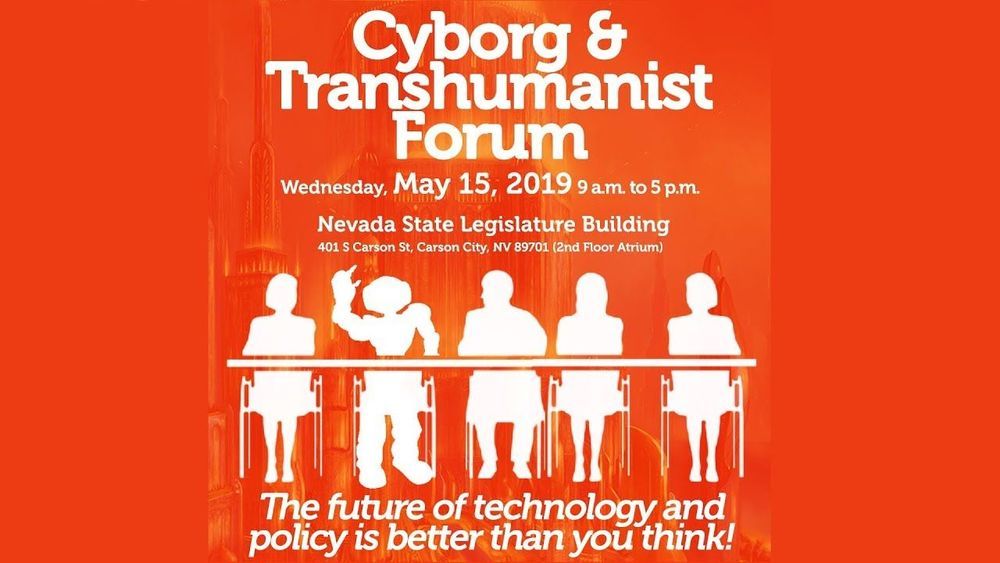
The Cyborg and Transhumanist Forum at the Nevada Legislature on May 15, 2019, marked a milestone for the U.S. Transhumanist Party and the Nevada Transhumanist Party. This was the first time that an official transhumanist event was held within the halls of a State Legislature, in one of the busiest areas of the building, within sight of the rooms where legislative committees met. The presenters were approached by tens of individuals – a few legislators and many lobbyists and staff members. The reaction was predominantly either positive or at least curious; there was no hostility and only mild disagreement from a few individuals. Generally, the outlook within the Legislative Building seems to be in favor of individual autonomy to pursue truly voluntary microchip implants. The testimony of Anastasia Synn at the Senate Judiciary Committee on April 26, 2019, in opposition to Assembly Bill 226 — https://www.youtube.com/watch?v=kXGessk5c24 — is one of the most memorable episodes of the 2019 Legislative Session for many who heard it. It has certainly affected the outcome for Assembly Bill 226, which was subsequently further amended to restore the original scope of the bill and only apply the prohibition to coercive microchip implants, while specifically exempting microchip implants voluntarily received by an individual from the prohibition. The scope of the prohibition was also narrowed by removing the reference to “any other person” and applying the prohibition to an enumerated list of entities who may not require others to be microchipped: state officers and employees, employers as a condition of employment, and persons in the business of insurance or bail. These changes alleviated the vast majority of the concerns within the transhumanist and cyborg communities about Assembly Bill 226.
This Cyborg and Transhumanist Forum comes at the beginning of an era of transhumanist political engagement with policymakers and those who advise them. It was widely accepted by the visitors to the demonstration tables that technological advances are accelerating, and that policy decisions regarding technology should only be made with adequate knowledge about the technology itself – working on the basis of facts and not fears or misconceptions that arise from popular culture and dystopian fiction. Ryan Starr shared his expertise on the workings and limitations of both NFC/RFID microchips and GPS technology and who explained that cell phones are already far more trackable than microchips ever could be (based on their technical specifications and how those specifications could potentially be improved in the future). U.S. Transhumanist Party Chairman Gennady Stolyarov II introduced visitors to the world of transhumanist literature by bringing books for display – including writings by Aubrey de Grey, Bill Andrews, Ray Kurzweil, Jose Cordeiro, Ben Goertzel, Phil Bowermaster, and Mr. Stolyarov’s own book “Death is Wrong” in five languages. It appears that there is more sympathy for transhumanism within contemporary political circles than might appear at first glance; it is often transhumanists themselves who overestimate the negativity of the reaction they expect to receive. But nobody picketed the event or even called the presenters names; transhumanist ideas, expressed in a civil and engaging way – with an emphasis on practical applications that are here today or due to arrive in the near future – will be taken seriously when there is an opening to articulate them.
Continue reading “Cyborg and Transhumanist Forum at the Nevada State Legislature — May 15, 2019” »
May 21, 2019
Atom Power Is Launching the Era of Digital Circuit Breakers
Posted by Quinn Sena in categories: computing, mobile phones, particle physics
In the dark, dank depths of your home basement hangs a drab gray box that guards the building’s electrical circuits. The circuit breakers inside switch off current flow when there is risk of an overload or short circuit, keeping you safe from fires or electrocution. It’s a critical job, and one that breakers have been doing with a fairly simple, 140-year-old electromechanical technology.
But circuit breakers are about to get a digital overhaul. New semiconductor breakers that combine computing power and wireless connectivity could become the hub of smart, energy-efficient buildings of the future.
“It’s like going from a telephone that just makes calls to a smartphone with capabilities we’d never imagined before,” says Ryan Kennedy, CEO and co-founder of Atom Power in Charlotte, North Carolina. “This is a platform that changes everything in power systems.”
Continue reading “Atom Power Is Launching the Era of Digital Circuit Breakers” »
